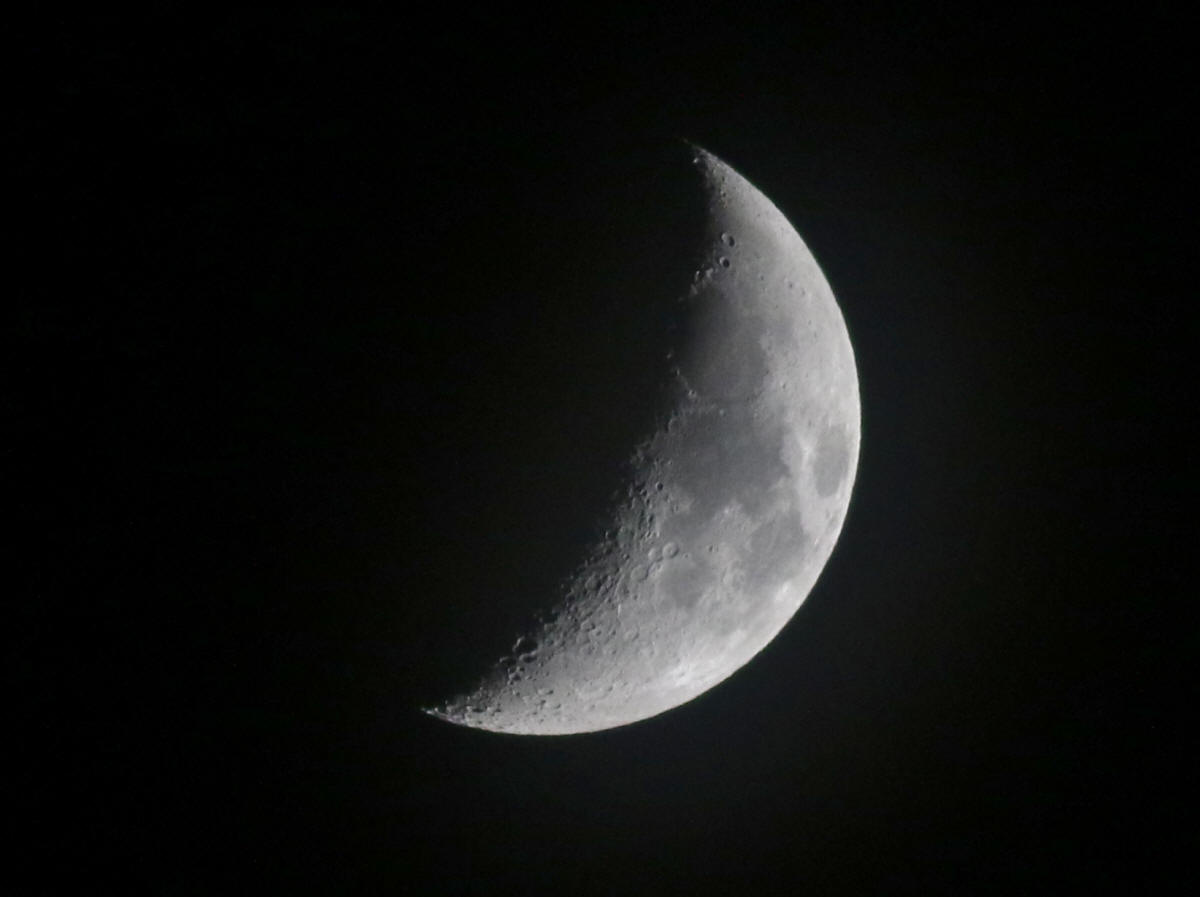
The Waxing Crescent Moon
Teleconverter
Comparison
December 5, 2016
Three images of the 35% illuminated waxing crescent moon were captured with a Canon EOS 7D Mk II digital SLR camera and a Canon 400 mm f/5.6L telephoto lens on a fixed tripod. The first was with the telephoto lens alone, the second with the telephoto lens and a Kenko 1.4x teleconverter and the third with a Kenko 2x teleconverter. They were then cropped to similarly fill a 4:3 ratio frame, then resized and resampled to the same final size, 350 pixels wide on the home page, 1200 pixels wide on this page, in an effort to see which yields the best resolution for a given moon size in the image. It was also necessary to adjust the brightness and contrast to match them as near as possible. At the time the pictures were taken, about 40 minutes after sunset, the sky was still somewhat blue (but it goes black here since it was greatly underexposed when the moon is properly exposed). The sky was also a bit hazy, causing some odd glow around the illuminated area, so I'll probably repeat the experiment at some point in a clearer sky. In any case, none of the three stand out as the sharpest with the best detail (although if I had to pick one, it would be the one with the 1.4x teleconverter).
1. The 400 mm telephoto lens alone
Taken at 5:13 pm EST, exposed 1/1000 second at f/5.6, ISO 1250. Cropped to 1655 x 1238 (from the native 5472 x 3648) before resizing.
2. The 400 mm telephoto lens with a Kenko 1.4x teleconverter (= 560 mm)
Taken at 5:17 pm EST, exposed 1/1000 second at f/8, ISO 1000. Cropped to 2175 x 1624 (from the native 5472 x 3648) before resizing.
3. The 400 mm telephoto lens with a Kenko 2x teleconverter (= 800 mm)
Taken at 5:21 pm EST, exposed 1/1000 second at f/11, ISO 3200. Cropped to 3171 x 2374 (from the native 5472 x 3648) before resizing.